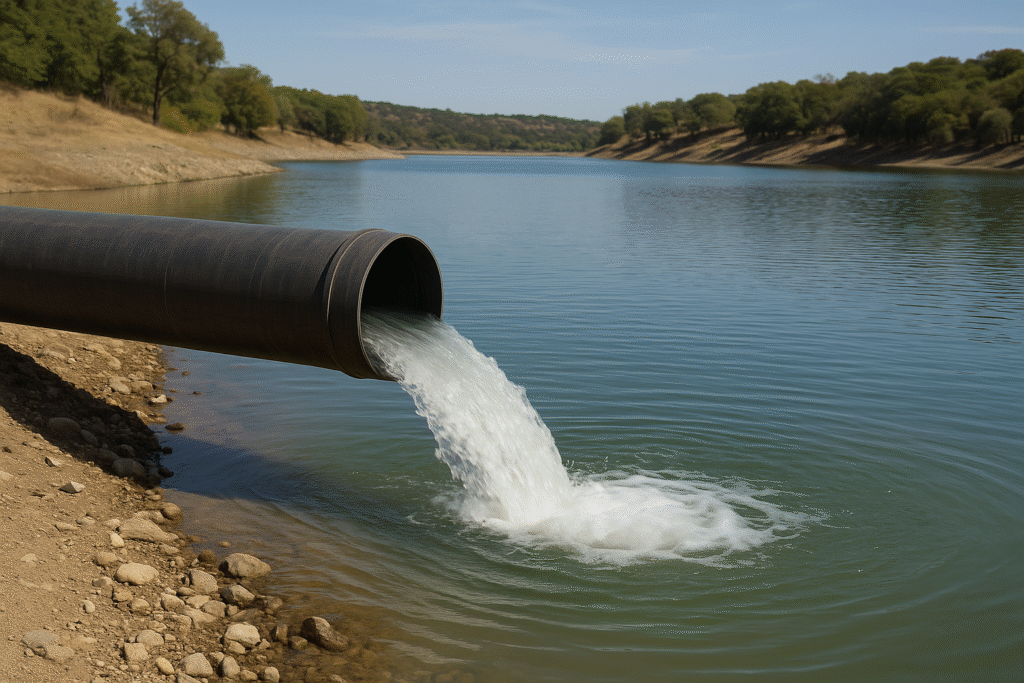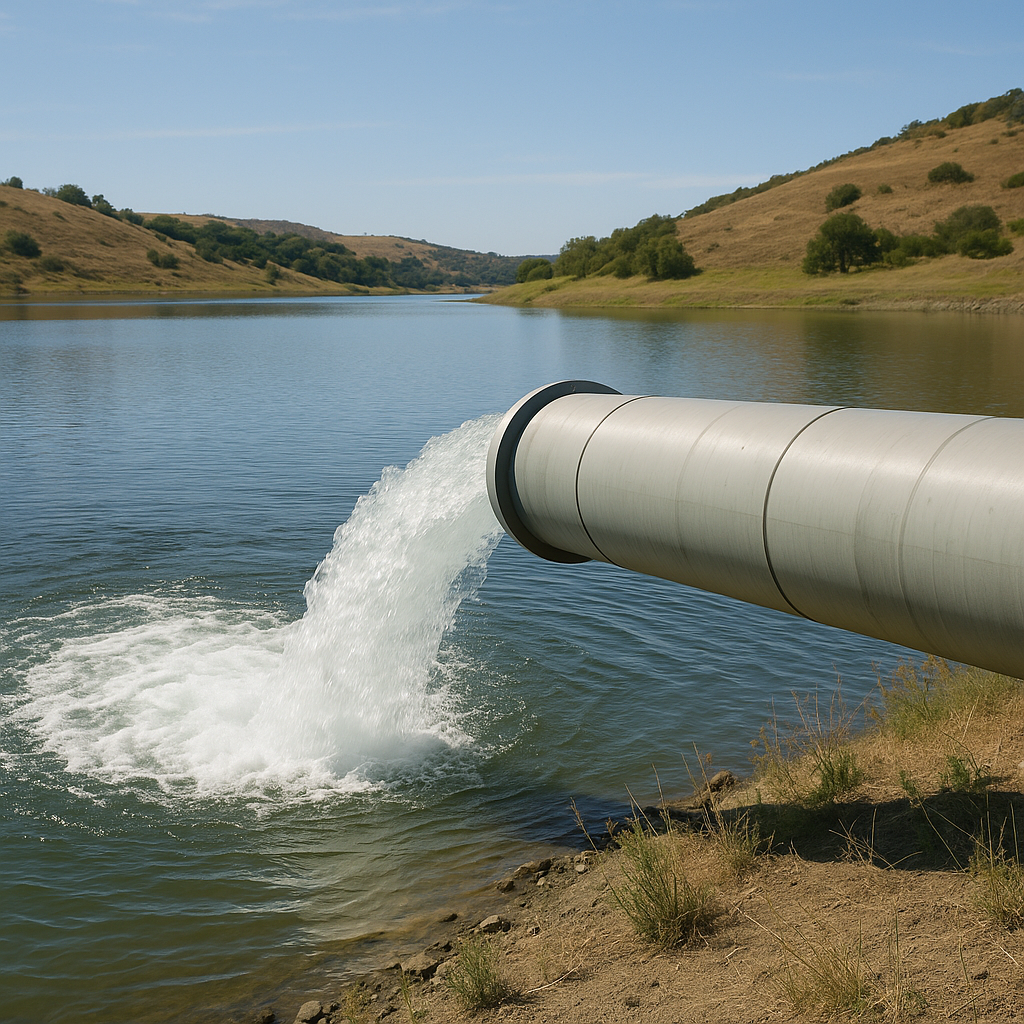The United States is facing a growing and urgent crisis—chronic drought in some of its most populated and agriculturally significant states. From California’s Central Valley to the expansive ranchlands of Texas, arid conditions are increasingly common, wreaking havoc on farms, ecosystems, and communities. Simultaneously, other parts of the country—like the Midwest and Southeast—experience excessive flooding, leading to billions in damage and wasted resources.
The stark contrast between water scarcity and water abundance in different regions of the U.S. reveals a critical need for a national water infrastructure solution. Specifically, the creation of large-scale water pipelines to transport water from water-rich areas and even the ocean (with desalination) to drought-stricken areas like Texas is not just a lofty idea—it’s a necessity for America’s future.
This article explores why and how the U.S. should invest in a national water pipeline system, how it could help states like Texas refill their drying lakes and rivers, the role of desalination and floodwater diversion, and the challenges and opportunities that lie ahead.
I. Understanding the Water Imbalance in America
The American water crisis is not about absolute scarcity—it’s about distribution.
1. Drought Conditions in the Southwest
Texas, New Mexico, Arizona, and California routinely experience droughts. In Texas, reservoirs like Lake Travis, Canyon Lake, and Lake Buchanan have dipped to alarming levels multiple times over the past two decades. Agricultural operations, residential communities, and energy production are all strained by the lack of consistent water supply.
According to the U.S. Drought Monitor:
- Over 40% of Texas has experienced moderate to exceptional drought conditions in the past decade.
- Climate projections suggest hotter and drier years ahead, worsening the drought cycle.
2. Flooding in the Midwest and Southeast
In contrast, states like Mississippi, Arkansas, Illinois, and Missouri face periodic massive floods. Waterways like the Mississippi and Missouri Rivers regularly breach their banks, causing billions in property damage while dumping excess water into the Gulf of Mexico. The Eastern Seaboard and Gulf Coast also receive heavy rainfall that becomes stormwater runoff—often wasted.
This disparity is like watching someone starve in one room while the other room throws food in the trash. The U.S. doesn’t have a water shortage—it has a water logistics problem.
II. What if America Built a National Water Pipeline?
Imagine a country where we can move water like we move oil or natural gas—through pipelines stretching thousands of miles, linking rivers, desalination plants, and flood zones to thirsty cities and croplands.
1. How It Would Work
- Desalination Plants: Seawater would be converted into freshwater at coastal desalination plants. Texas, California, and Florida all have coastline suitable for this.
- Pumping Stations: Water would be pumped from desalination plants or river overflow zones.
- Pipelines: An extensive network of underground or above-ground water pipelines would carry water to inland reservoirs, rivers, or directly to municipalities and farms.
- Reservoir Recharge: Strategic placement of pipelines could allow for replenishing lakes and aquifers, helping reverse drought damage.
2. Strategic Locations
- From the Mississippi River to West Texas
- From the Great Lakes to the Southwest
- From the Gulf of Mexico (with desalination) to Central Texas and Arizona
- From the Columbia River basin to Southern California
Some of these routes would follow existing rights-of-way like railroad tracks, interstate highways, or energy corridors, minimizing environmental disruption.

III. Why Texas Should Be a Priority
1. Drought and Population Growth
Texas isn’t just dry—it’s growing. With over 30 million residents, and projections to surpass 40 million in the next few decades, Texas is an economic powerhouse with unsustainable water usage.
Cities like Austin, San Antonio, and Dallas are already under constant water conservation advisories. Water-intensive industries—like semiconductor manufacturing, agriculture, and petrochemicals—could face shutdowns or relocation without reliable water sources.
2. Shrinking Lakes and Ecosystems
- Lake Travis, Canyon Lake, and Lake Buchanan are central to Central Texas’s water supply and tourism economy. Both have seen dangerously low levels during dry years.
- The Rio Grande has at times dried up before reaching the Gulf of Mexico.
- Aquifer recharge rates are declining, and without intervention, wells across rural Texas could run dry.
Texas needs a proactive water replenishment strategy, not just temporary conservation orders.
IV. Leveraging Floodwaters from Other States
Every year, millions of acre-feet of freshwater are lost to flooding in the Midwest and Southeast. By capturing and diverting this water during flood events, America could dramatically improve water security in drought-stricken regions.
1. Storage Reservoirs
Flood-prone regions could install temporary capture basins that redirect overflow into holding reservoirs, which are then drained into pipeline systems once flooding subsides.
2. Reducing Disaster Costs
Every gallon diverted through a pipeline to Texas or Arizona is one less gallon damaging homes in Illinois or Arkansas. It’s not just water supply—it’s disaster prevention.
V. The Role of Desalination and Coastal Pipelines
Seawater desalination has been criticized for being energy-intensive and costly. But with advances in renewable energy and reverse osmosis technology, it’s becoming more feasible and cost-competitive.
1. Texas is Already Exploring It
In Corpus Christi and Brownsville, desalination projects are in the early stages. Houston and Galveston could follow suit. Coastal desalination plants could supply pipeline systems that distribute freshwater across the state.
2. Pairing With Renewable Energy
Desalination powered by solar and wind—two abundant resources in Texas—could make the process more sustainable. Pipelines moving desalinated water inland would help offset drought cycles and reduce over-reliance on underground aquifers.
VI. Overcoming Challenges
No grand infrastructure project comes without obstacles. But the benefits of a national water pipeline system far outweigh the challenges.
1. Cost
Estimates for large-scale water pipeline systems run into hundreds of billions of dollars. But compare that to:
- The $300+ billion cost of drought damage over the last 20 years
- Flood damage costs exceeding $20 billion annually
- The trillions of dollars spent on national defense and oil infrastructure
If we can build pipelines for oil and gas, we can build them for the most essential resource of all: water.
2. Environmental Concerns
Proper environmental assessments and modern construction practices can reduce the impact on wildlife and ecosystems. Using existing utility corridors would further minimize disruption.
3. Political and Regulatory Barriers
Water rights, interstate cooperation, and federal regulations will require strong leadership. The creation of a Federal Water Infrastructure Authority could streamline approvals and coordinate efforts nationally.
VII. The Precedent Is Already There
The U.S. has built mega-pipeline projects before:
- The Central Arizona Project brings Colorado River water hundreds of miles inland.
- The California Aqueduct delivers water from Northern California to Los Angeles.
- Alaska’s oil pipeline spans 800 miles through difficult terrain.
This isn’t a moonshot—it’s an engineering challenge with a known playbook.
VIII. A National Water Grid for the Future
Think of a future where:
- Farmers in Texas receive irrigation water from Mississippi flood zones.
- Cities in Arizona get clean drinking water from solar-powered desalination plants in California.
- Interconnected pipelines crisscross the U.S. like interstate highways, ensuring every citizen has access to water—no matter the climate.
This system would serve like a national water grid, similar to our electrical grid, enabling real-time responses to drought, fire, floods, and future climate disasters.
IX. Conclusion: The Time to Act Is Now
Water is life. And while oil pipelines built the economy of the 20th century, water pipelines will sustain the economy and people of the 21st.
Texas and other drought-prone states cannot rely solely on conservation or wishful rain forecasts. The science is clear: longer droughts, hotter summers, and rising populations are here to stay.
By creating a coast-to-coast water transportation network, the U.S. can:
- Provide long-term drought relief
- Prevent flood damage
- Replenish lakes, rivers, and aquifers
- Secure its food and energy future
The only thing missing is the national will to begin. With smart investment, bipartisan support, and modern technology, the U.S. can make this vision a reality—before it’s too late.
FAQs
Q: Isn’t desalination too expensive to be practical?
Desalination costs are decreasing thanks to new membrane technology and renewable energy integration. In regions like Texas with abundant sun and wind, desalination can be a scalable and cost-effective solution.
Q: How much water could really be moved via pipeline?
Depending on pipe diameter and pressure, a single large pipeline could transport hundreds of millions of gallons per day—enough to supply entire metro areas or refill major reservoirs over time.
Q: Has anything like this been done before?
Yes. The Central Arizona Project, California Aqueduct, and water transfer systems in Israel and China prove that large-scale water transport is technically feasible and already working elsewhere.
About the Author

Mister San-Marcos is a resident of the great state of Texas and considers himself a strategic thinker on all topics. Politically, you’ll find him to be more right-leaning, but not too far. He has lived a wonderful life and a successful career and is now focusing his time on sharing his thoughts and recommendations to the world.



